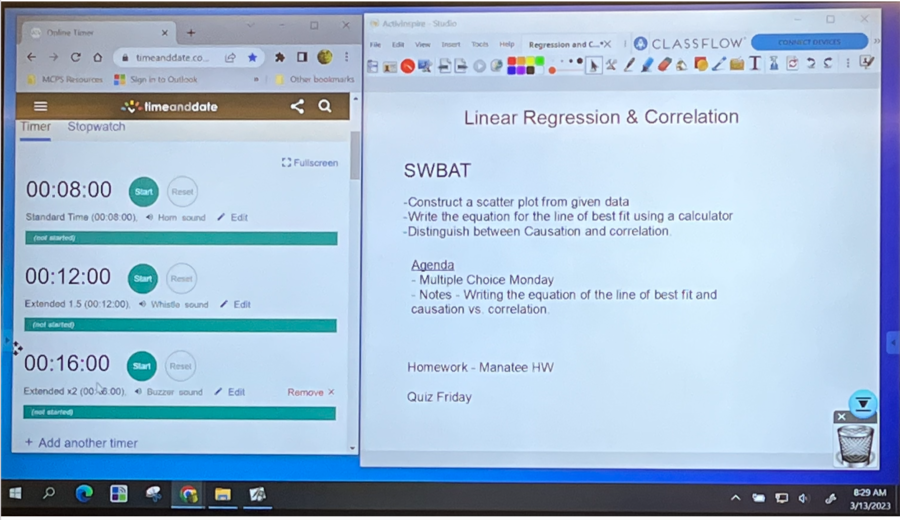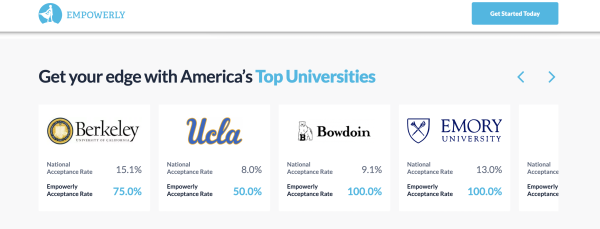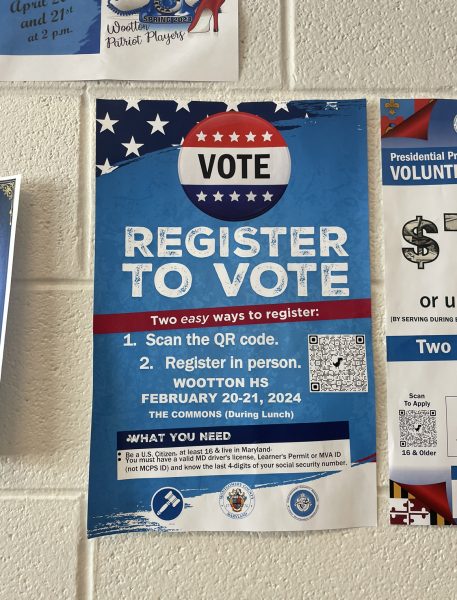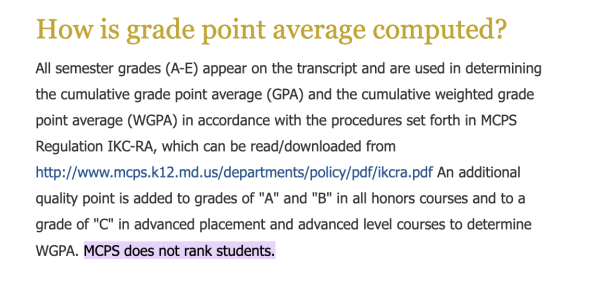Leveling the academic playing field: How extended time provides equitable environment for all students
For a multiple choice Monday test in AP Statistics, teacher Chris Schreckengost put up three separate timers for standard time, one and a half time, and double time.
In today’s academic climate, it is important to determine if students are given enough or too much time to complete assignments and exams. It may be seen that students get an unfair advantage over other students, which may affect their academic development. Extended time gives students an equitable opportunity to level the playing field with others as opposed to an advantage.
In Montgomery County Public Schools (MCPS), students have three different time limits for their quizzes and tests. The majority of the students will have what is known as normal or standard on the test. The smaller minority of the other students are given either one and a half or double time over the students. There are multiple ways students can get these accommodations to help them with the tests and assignments. One way is if you are an ESOL (English Speakers of Other Languages), in which case you will get extended time due to use of a dictionary, which will take up time on tests to use. Another reason for extended time would be an IEP or a 504 plan. These plans are given to students who have anywhere from minor to major disabilities. In order to obtain either of these accommodations you must have meetings with doctors for diagnoses and school counselors in order to determine what help you need to reach your academic potential.
An argument on why extended time may be harmful to students is because it is poor preparation for jobs. Where in school these students are provided with extended time they will not be able to perform tasks at the same speed as an employee who did not get extended time in high school. “Where in the world do you get extended time, as a teacher you don’t get extended time, as an EMT you don’t get extended time, it is poor preparation for the real world,” marketing teacher Barbara Barry said.
Although speed may come to be a slight bump in the road for people who had extended time, the ADA (Americans with Disabilities Act) states that employees with disabilities must be met with accommodations such as specific and different tasks given to them or an aid to help with their service. Another argument is that some students who have extended time may not need the help and that it is given to too many students. Although you may feel as if one of your peers is taking advantage of extended time it is quite the opposite: not enough students use it. According to Nick Anderson of the Washington Post, approximately 5% of students who took the ACT in 2017 used extended time to help them out. Although this may seem like a high number according to the CDC, nearly 14% of children have some sort of disability. “I don’t know if it is given to too many students; some may have it who don’t need as much help and some may need it who don’t have it,” teacher Paula Levy said.
While some believe that extended time gives an unfair advantage to students, it is purely meant to level the playing field for students who need the slight boost. Where it may seem as if the extra time just gives them more time to study and look over a problem, what it actually does is make up for the time lost. A common reason for extra time is ADHD; according to the CDC symptoms of ADHD among adolescents are trouble focusing, fidgeting and trouble staying in seats.
Your donation will support the student journalists of Thomas S. Wootton High School. Your contribution will allow us to purchase equipment and cover our annual website hosting costs.
Justin Miller is in his 3rd and half year as a staff writer for Common Sense. He is a senior and is a backup goalie on varsity lacrosse. In his freetime,...












